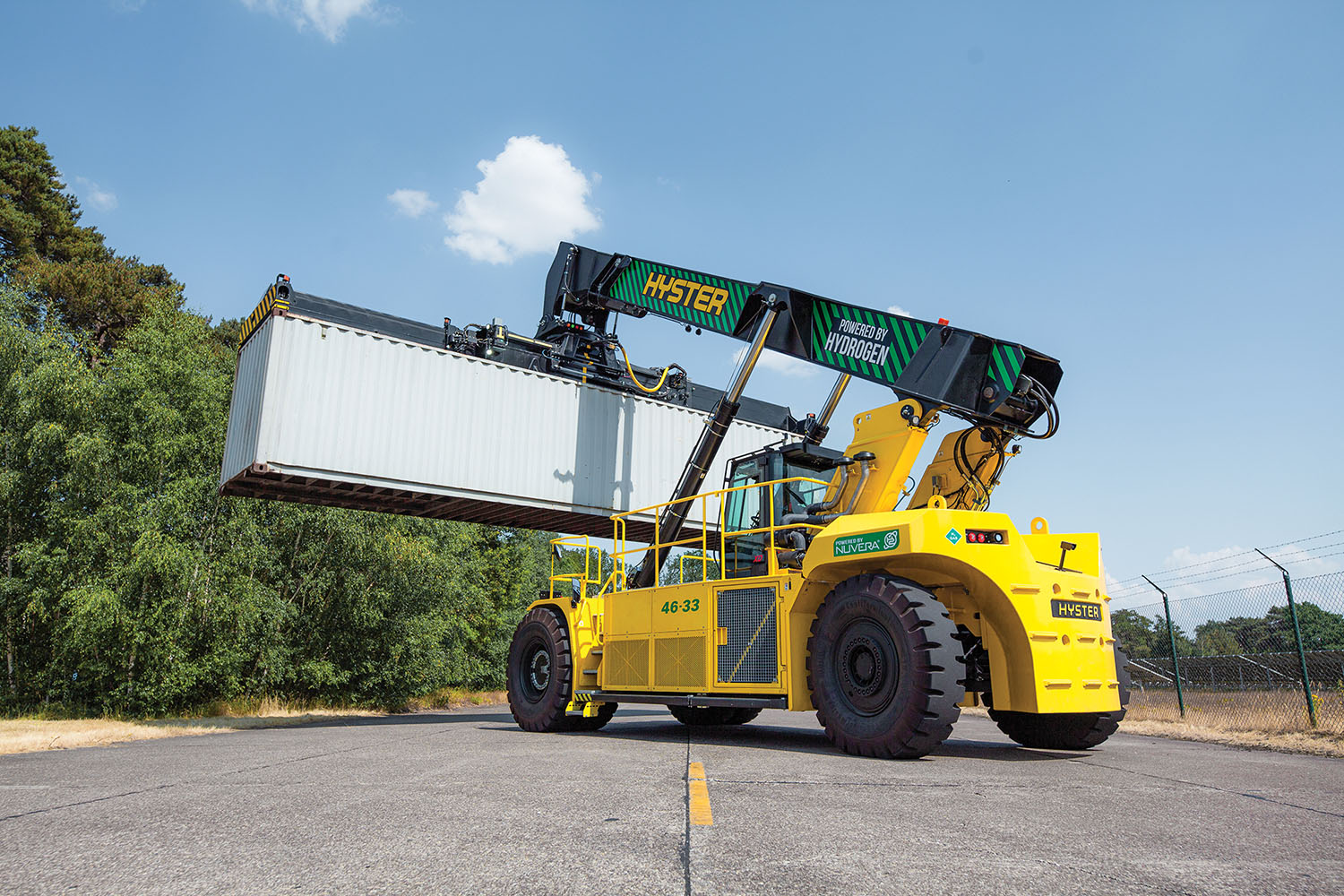Hyster Company, a global provider of container handling solutions, has developed and shipped a hydrogen fuel cell ReachStacker for a pilot project at the Port of Valencia in Spain. This Hyster ReachStacker is an innovative zero-emission solution that uses a Nuvera Fuel Cell Engine to convert hydrogen into electricity. The hydrogen is stored on board in high-pressure tanks and can be refilled in 10-15 minutes. The onboard hydrogen fuel cell charges the batteries, which power the electric motors and hydraulic systems enabling the ReachStacker to lift laden containers with similar performance to a diesel-powered alternative.
This application is exploring advantages of the hydrogen fuel cell ReachStacker compared to conventional diesel-powered machines. It offers reduced greenhouse gas emissions, noise pollution and operating costs through the elimination of a diesel engine, transmission and other mechanically driven components.
The Hyster ReachStacker will be tested and validated in live operation at the MSC terminal in Valencia, one of the largest container terminals in Europe. The H2Ports project, funded by the Fuel Cells and Hydrogen Joint Undertaking (FCH-JU) and coordinated by the Fundación Valenciaport, involves several partners from the port community, industry and academia.
“We are proud to be part of the H2Ports project and to contribute to the development of zero-emission solutions for port operations,” said Jan-Willem van den Brand, director of global market development for Hyster. “The hydrogen fuel cell ReachStacker is a breakthrough innovation that demonstrates our commitment to sustainability and customer satisfaction. We look forward to seeing it in action at the Port of Valencia and to receiving valuable feedback from the end users.”
Caption for photo: ReachStacker is part of the H2Ports project, which aims to introduce hydrogen-powered vehicles and equipment in port operations.




